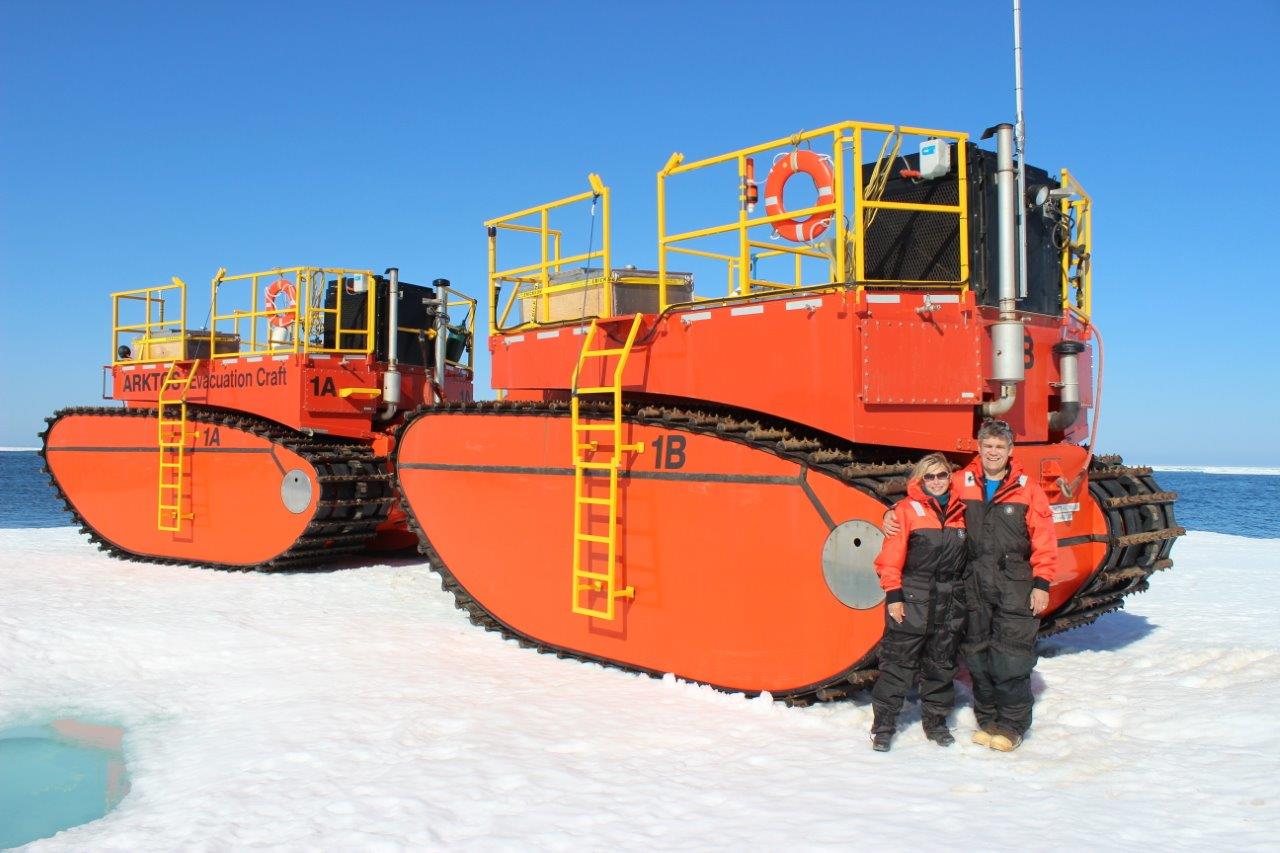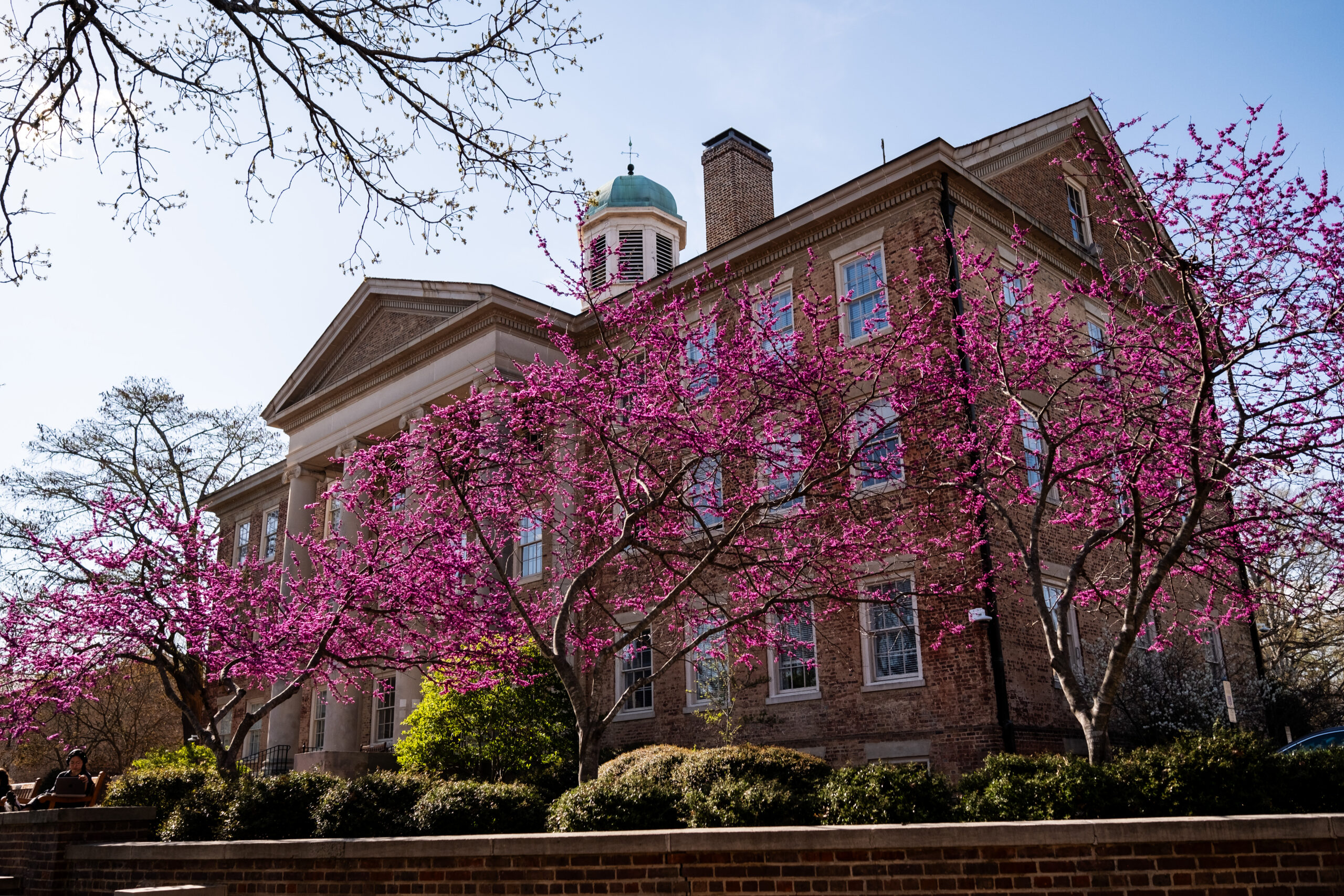When Bruce Seligman ’77 was a teenager in England, he won funding to build a rowboat that could carry him across the Atlantic.
“To see if I could,” he explains simply.
The feat had been attempted before. But they had all failed due to the extreme wear on the rower’s hands.
“I cycle a lot,” Bruce says. “I invented a boat with a cycling station.”
That would allow him to alternate using his arms and legs as he paddled from Great Britain to North America.
But he never got around to actually doing it—because around that time, Bruce was offered the Morehead-Cain Scholarship to attend Carolina.
Even though he never rowed across the Atlantic, Bruce still spends his time inventing unusual watercraft. Today he is the founder and president of ARKTOS Amphibious Craft, which builds lifeboats that can be driven on land. Aptly named, arktos is the Greek word for ‘polar bear’—an equally amphibious creature.

Bruce with his wife in front of ARKTOS craft.
Originally designed for arctic conditions, ARKTOS can be used to move people and things in otherwise inaccessible areas. The craft has been used to evacuate people out of danger, to improve response times for oil spills, to fight fires in isolated areas, and for geophysical surveys.
Coming from a maritime family, Bruce says he’s always loved being on the water—even when it’s frozen. He says ARKTOS was originally meant to be a three-month project for his boss at the time. Now it’s been almost forty years.
Soon after Bruce started working on ARKTOS, his England-based parent company, Celtic Shipyards International, went bankrupt. Bruce’s boss sold him ARKTOS (which was then called Watercraft Offshore Canada) “for pocket change, because he didn’t want all the creditors to get the research he’d done up to that point,” Bruce says.
Bruce, who now lives in Vancouver, says producing these craft is more complex than one might imagine. ARKTOS craft have the highest level of amphibious capability in the world, with the ability to climb from deep water to ice and up vertical shorelines. They can operate in shallow water, mixed ice-water, deep mud, and even quicksand. They can also carry heavy loads and tow a variety of equipment, including other boats!
Bruce says he can’t talk in depth about his clientele due to confidentiality agreements, but he does disclose that oil companies comprise his largest customer base, particularly in northern Alaska and the north Caspian Sea.

ARKTOS climbing out of the water onto a three-foot vertical ice shelf
He says ARKTOS’s biggest challenge is maintaining continuity in a sporadic market.
“Certain times we have sixty to seventy people in the factories, then it goes quiet for a year, then it gets busy again,” he says. “Now with global warming, the market is about to get a lot bigger—I won’t be around for it, but in the next fifty years.”
According to climate change experts, a common misconception about global warming is that it leads to hotter temperatures everywhere. These scientists contend that, in fact, global warming simply causes more extreme weather globally—making versatile transportation methods like ARKTOS more necessary.
And what does Bruce like most about his work? Besides being on the water, of course—it’s the opportunity to focus on one challenge over the majority of his career. Shortly after graduating from Carolina, Bruce worked for an investment bank in London, but found it “tedious” working on many projects for many people.
“I prefer to work in one direction,” he reflects.
Bruce says he was always interested in business. He says Carolina’s business school taught him life lessons he never would have gained from school in his native England.
“The B-school showed me something totally different from what I knew in England. I met professors who got me thinking about different ways to approach problems,” Bruce says. “That’s my number-one life lesson: solving problems.”
And he gives ultimate credit for that to the Foundation.
“I’d like to share my sincere thankfulness to the Foundation,” he says. “They’re the ones who gave me the break to do things I enjoy. I have extremely fond memories of Chapel Hill.”


